2025 Roundabout, #5
Port enter the Goldilocks Zone, Collingwood are back, and the Crows can't just do the fun stuff.
Hello, and welcome back to Roundabout. Apologies for the unscheduled week off, I had to deal with some things last week which unfortunately made writing the newsletter that I wanted to impossible. There’s nothing wrong with your email settings!
Three morsels this week: how Port’s new ball movement scheme finally clicked, Collingwood’s renaissance, and the Crows’ defensive deficiencies.
I always love hearing from readers. If you have some thoughts, feedback or observations to share, please get in touch with me via the comments section, email or social media. I’d especially love to hear from any readers who attended Gather Round.
Port find the right bowl of porridge
You’ve probably read – including right here – that Port Adelaide have been trying to handball more in 2025. To the extent that tweak has been explained, it seems to be partly a function of the club hierarchy acknowledging that the side’s kick-heavy, forward press system hadn’t yielded the desired results in finals, and partly a function of the coaching reins (and thus, influence and responsibility) being progressively handed over from Ken Hinkley to Josh Carr.
It really has been a drastic shift. Last season, 63.5 percent of Port’s disposals were kicks. Only Brisbane kicked at a higher rate. So far this season, Port are 18th for kicks as a share of disposals. Unsurprisingly, there had been teething pains – Port went 1-3 in their first four games, their worst start to a season since 2022. You could see the issues out there on the field: unsure of how to space themselves on the outside of contests or how to line up for handball receives, Port’s players found themselves too vulnerable to being corralled into situations or areas of the field where they could be nullified and forced into giving up the ball.
The emotion-charged Gather Round grudge match against Hawthorn might not have seemed like the ideal game for Port to find the happy medium that had so far eluded them this year. But that’s precisely how it panned out. As the charts below show, Port generated scores much more efficiently and sustainably against Sam Mitchell’s Hawthorn than in any of their previous hit-outs in 2025, save for their beat up of a callow Richmond side in Round 2.
How did they do it? In short, by combining the best of both worlds – a willingness to use handballs to get to the outside of the contest, counter-balanced by a slight reversion to a game style which matches up well against Sam Mitchell’s Hawks.
Quickly, a word about Port’s tactical over-correction to start the season. The chart below shows how dramatic the shift from a kick-intensive style was, especially in the first two games of the year.
Over the last three games, including Sunday night, Port appear to have found a more sustainable balance. That’s backed up by looking at how much ground they’re taking with their disposals:
More handballs, yes, but also – crucially – more metres gained by hand. Against Hawthorn, Port gained almost exactly as many metres with their disposals as they did across all of 2024.
That speaks to a more judicious balance. And it came just in time, too: because, despite being too easy for the best sides in the competition to counter, the ball movement style Port employed prior to this season was quite effective against Hawthorn. This piece by AFL journalist Cal Twomey does a nice job of explaining how Port constrained Hawthorn. Some choice excerpts:
Since the beginning of 2024, Hawthorn have taken an average of 84 uncontested marks per game. However, that number plummets to just 56 in their three games (including the Gather Round defeat) against Port Adelaide.
Over the same time period, the Hawks have played on from 25 percent of their marks – but that rate falls to just 18 percent against Port.
Hawthorn kick it long, and kick it forward, more against Port than in general.
And, perhaps more crucially, their contested possession rate increases from 37 percent against all sides to 42 percent in those three games against Port. That share would have been ranked first in the AFL this season, last season, and 2023.
So, in essence, Port’s willingness to press up high and adopt a man-on-man zone has forced Hawthorn to deviate from their highly-refined, almost automatic ball movement patterns, and enhanced the roles of damaging contested players like Jason Horne-Francis and Zak Butters. That aggression also led to dangerous forward-half turnovers: two-thirds of their scores came from that zone, significantly above AFL average. A word here must go to Connor Rozee, who flourished to the point of being the best player on the ground in a half-back role. It’s an interesting redeployment: I and many astute Port fans have fretted about the defensive running of a midfield with Horne-Francis, Rozee and Butters. And although purists might grumble at the sight of the captain being “relegated” to a less central role, Port’s discipline around stoppages and ability to move the ball up the field were both better in this game than they had been all season to date.
Ken Hinkley, Josh Carr, and whoever else makes tactical decisions at Alberton are probably right to implement a style which grants cleaner stoppage exits and better forward-50 entries (especially with a relatively undersized forward line). But, as Gather Round showed, perhaps evolution is easier to achieve than revolution.
This post is free. But please consider supporting my work with a subscription.
Collingwood man the barricades
I’m old enough to remember when Collingwood were called too old and slow to figure meaningfully in this year’s flag race. Well since that admittedly disappointing Opening Round effort against GWS, the Pies have won four games in a row, all against sides that have plausible hopes of playing in September.
What’s been impressive is how Collingwood have done it. In the first two years of coach Craig McRae’s tenure, the Pies stole a march on the rest of the competition by combining fluid back-half ball movement (and orchestrated off-ball movement) with expert game management. They ranked sixth in the AFL for back-half scores in 2022 (after languishing in 14th in 2021) and topped the pile in their Premiership year. Collingwood were a good intercepting side, which made them defensively robust – they were fifth in expected score conceded in 2022 and fourth in the same metric in 2023. Last year, because of a combination of form, injuries, and their opposition eroding their tactical advantage, the Pies couldn’t reprise the heroics that propelled them to the Premiership.
Collingwood’s re-emergence as a genuine Premiership contender hasn’t been built on their ball movement – it’s been built on their defence. Through the first five games of 2025, no side has conceded fewer expected scores. As is so often the case, defence begins with possession. Collingwood are 18th for corridor use from defensive 50 – in other words, they’re perfectly content to play the game in wide areas, safe in the knowledge that it generates easy rebound 50s (the Pies currently rank second for rebound 50 rate) and that, even if they do lose the ball, their defensive zone won’t allow easy entries and scores. Collingwood are currently conceding the lowest expected score per shot – by miles.
McRae’s side applies a slightly different principle when defending opposition rebound 50s. They still zealously defend the corridor. But they also vigilantly guard against easy opposition exits, even along the flanks. This clip from Channel Nine’s Footy Furnace explains it well.
Part of what we’re seeing here is McRae’s response to the approach which helped shut down the Pies last year: keeping the ball off them with slow plays and uncontested marks in low-value parts of the field. Fine, McRae and his side seem to be saying, we see you and we raise you. Collingwood’s proactive defensive positioning in their forward half has yielded significant benefits. A month into the season, the Pies are forcing more opposition turnovers than any other side, while only the Giants are conceding fewer points from their own turnovers.
It’s not just the volume of turnovers that would please Craig McRae, it’s their quality. As this chart, from friend of the newsletter James Ives shows, Collingwood are forcing more turnovers inside their own attacking 50 than any other side.
In fact, only Carlton and Gold Coast are forcing a clearly higher share of turnovers in their attacking half than the Pies, and only the Suns and Crows are generating higher expected scores (and, especially in the case of the former, against softer opposition).
One of the salutary effects of all that is Collingwood’s profile of what parts of the field they’re creating scores from appears much more sustainable than last season.
After two years of being unusually skewed to one half of the field over another, the Pies are currently bang in line with league averages. I think that’s probably a bullish sign: they’re a well-rounded side on both sides of the ball, without an obvious strength for opposition coaches to take aim at.
Less than a month after many pundits dismissed them as pretenders and pensioners, the Pies appear to once again be flexing their (aged) muscles. And, with the recent news that their club-tied draft prospects are making waves early in the underage season, rumours of Collingwood’s imminent demise may turn out to be exaggerated.
Enjoying my look back at Gather Round? Please consider sharing it with a mate!
Chaotic Crows get their wings clipped
Midway through Adelaide’s exciting-for-neutrals-stressful-for-fans Gather Round opener against Geelong, my Mr. Hyde Crows nuff persona briefly overpowered my cool, sober, footy newsletter author Dr. Jekyll persona and tweeted that “this team [the Crows] will kill me from stress/frustration”. There were very exciting moments. But there were slightly more despairing ones. And ultimately, if one is wearing blue, yellow, and red-tinted glasses, it’s difficult to look at a professional Geelong outfit that patiently chipped away at Adelaide’s weaknesses (and exploited their fatigue), in the process transforming a 30-point deficit into a 19-point win, and not reach the conclusion that there’s still a fair difference between the Crows and the true contenders.
A fair amount has already been said and written about Adelaide’s attacking profile. There are essentially no worries there: Adelaide are first for shots per inside-50 entry, first for goals per inside-50 entry, first for back-half scores, first for scores from turnover, second for expected score, and fourth for inside-50s. The front half, led by the tall forward triumvirate, is humming.
But the Crows have a glass jaw. And although it was easy to ignore their defensive frailties when they were kicking 25 goals, it’s much harder to do when they’ve lost their last two. Generally speaking, I think Adelaide’s stoppage structures and defensive zone coped well with the pressure that Damien Hardwick’s side subjected them to. I don’t think many sides will win at People First Stadium this year, and possibly even fewer will go +11 in clearances.
But they didn’t get the balance right against Geelong. A short break after playing in the Queensland heat and humidity probably didn’t help. But the Crows were far too porous in all phases of play, and as they started falling behind, they dialled up the risk until it was totally out of proportion with expected reward.
Despite the media coverage which has added two and two together and concluded the answer is five, the ultra-tall Crows’ forward line is actually well down the list of the side’s defensive issues. Matthew Nicks’ side concedes the lowest rate of opposition rebound 50s, and only GWS concede fewer back-half scores. Their forward press, just like the rest of their forward-half game, is in good order. Right now, almost all of the issues are happening further down the field. The fact that only four sides are conceding more inside-50s suggests that Adelaide’s second layer of defence is too permeable.
In a theme that regular readers will recognise, the seedgerm of Adelaide’s defensive problems is their ball use. The Crows are currently conceding more turnovers than any other side. That’s simply not sustainable. And those turnovers are hurting them. Take a look at this clip.
Geelong had the ball locked inside their forward 50 for a moment and intercepted a dump kick. From there, they switched it from their left attacking wing position to the other side of the ground. This wasn’t a fast play. It wasn’t an especially inventive play. And yet the Cats fashioned a spare the whole way through the chain. Lawson Humphries, Gryan Miers, Max Holmes, and – most damningly, Ollie Henry – all found themselves totally free in important parts of the ground. It’s one thing to concede off a fast turnover. It’s another to be caught napping on a slow play such as this one, with just three minutes left in the first quarter. This should not happen!
A look at the rate at which Adelaide are conceding from different types of possession chains suggests it’s not currently an isolated problem.
This season is shaping up to be the highest-scoring since 2017. Right now, sides are scoring an average of 0.762 per intercept chain (the most since 2017) and 0.922 points per stoppage chain (the highest since publicly accessible data on these stats began). The Crows, despite the above clip, are actually performing about league-average when it comes to points conceded per turnover. Their real problem at the minute is how many points they’re conceding from stoppages. This season, winning a clearance against the Crows has an expected value of 1.01 points. That’s massive. And it speaks to some issues that need to be resolved about their stoppage set-ups and – perhaps – the defensive qualities of their midfield personnel. Adelaide’s midfield is much more star-studded (and offensively capable) than it has been in recent years. But it’s vulnerable to being disrupted – and to being caught going the other way. No side is conceding more from centre bounce (19.2 points per game).
Centre bounce is really the perfect confluence of vulnerabilities for the Crows, because it’s the one phase of play where their wingers and midfielders can’t easily fall back to support inside defensive-50. The raw D50 stats aren’t actually all that bad: Adelaide are conceding the fifth-fewest shots per opposition entry, and the ninth-most scoring shots. The issue is that, partly because they’re making too many ball use errors in deep positions, they’re conceding far too many marks and ground balls in high-value spots inside defensive 50. The Crows are 16th in the AFL for opposition forward-50 ground ball gets and 16th for opposition score per shot.
The sky hasn’t fallen in. Adelaide supporters would probably have accepted their current 3-2 record if offered it before the season began. Nor do I think the fixes are impossible. The introduction of one or two more naturally defensively-minded players to the defence would help (Nick Murray’s return from a jarred knee can’t come soon enough for Crows fans). Being slightly slower and more conservative in defensive areas will give the defence more time to snap into position even if turnovers do happen. But, with a difficult run of games before the bye, Matthew Nicks and his lieutenants have some calibrating to do. A red-hot attack can’t be prioritised ahead of a struggling defensive line indefinitely.
Semi-fun facts and figures:
According to Sir Swampthing (and who would doubt him?), Gather Round (96.33) was the highest-scoring round of AFL footy since Round 2, 2017. Not coincidentally, this season is currently on track to be the highest-scoring season since… 2017.
You might have already seen this one, but West Coast only won 77 contested possessions against Carlton on Saturday – the lowest tally in AFL history. The previously winless Blues, meanwhile, had 136. Carlton also won inside 50s by 73 to 35 and clearances by 40 to 18. The Eagles were lucky to only lose by 71 points. Things are looking extremely bleak.
In what’s fast becoming my regular Nasiah-Wanganeen Milera update: 14 of his 24 disposals against Greater Western Sydney at Norwood Oval were registered in the front half. That’s only the second time he’s had more than half of his touches forward of centre since the beginning of last year, and very possibly only the second time he’s done it in his career. And although he couldn’t quite inspire his side to victory, the dividends were rich: three goals, five inside-50s, 673 metres gained, and the highest player rating of the round.
Just one side this year has generated the clear majority of their points from shots in general play so far this season (as opposed to set shots). Any reader who names that side will get a shout-out in next week’s edition of the newsletter. Bonus points if you can explain why.
‘Til next week!



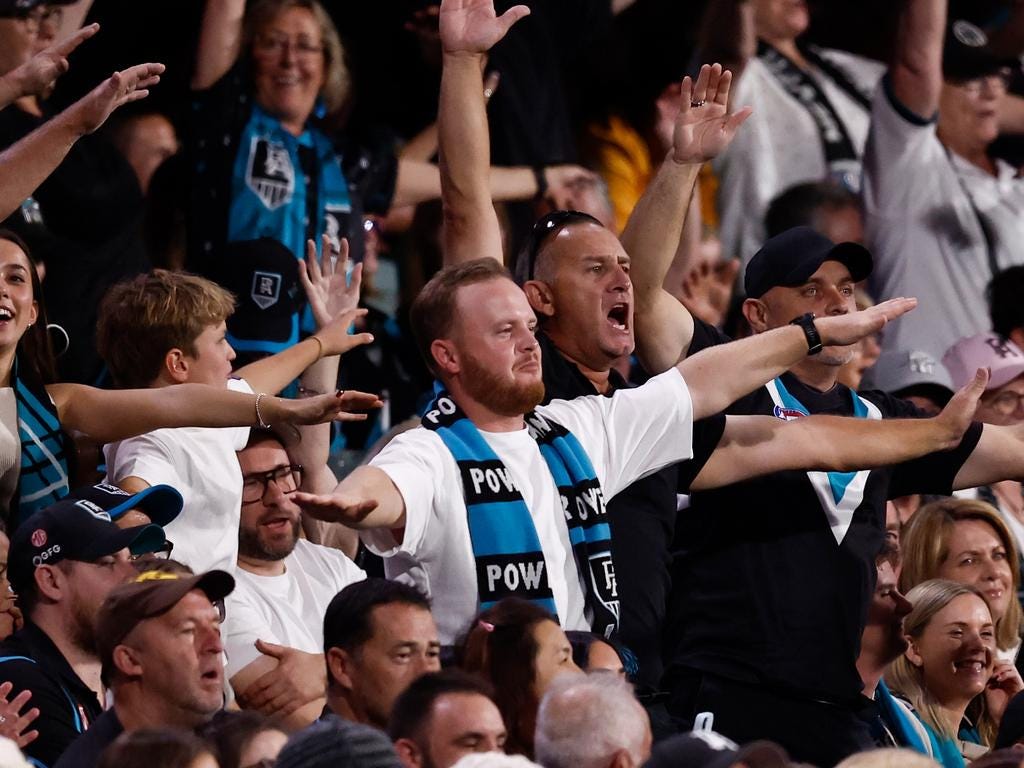

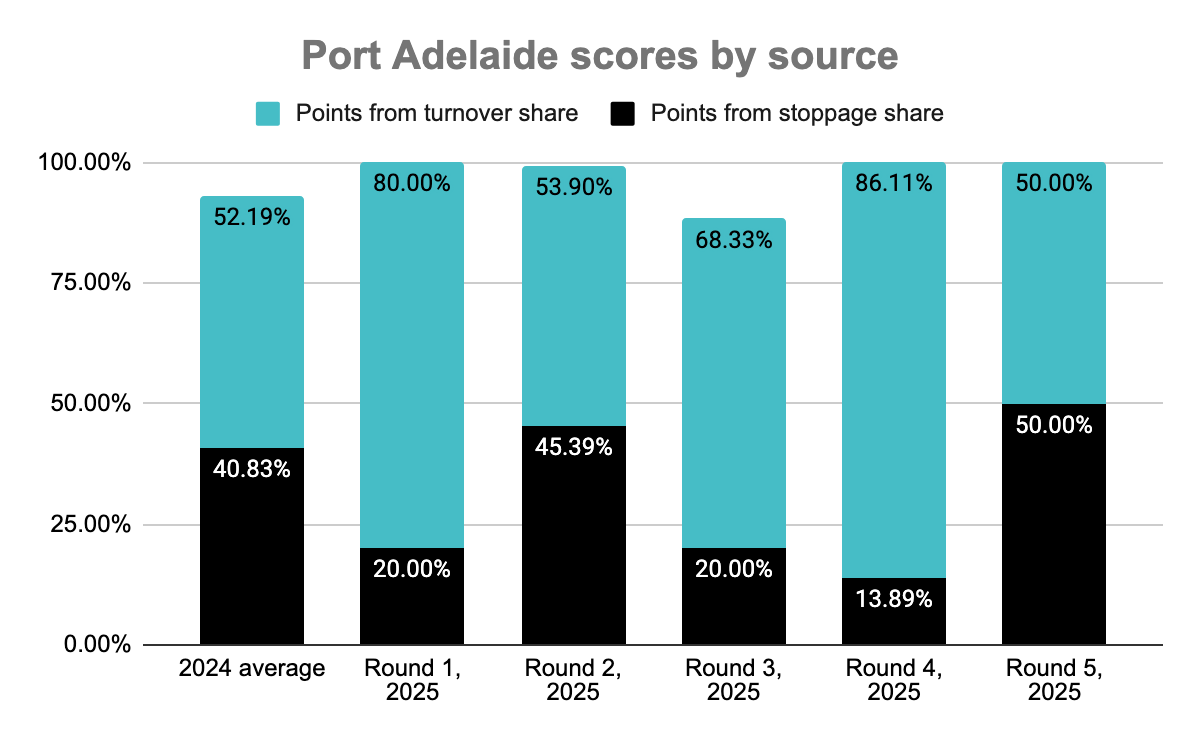

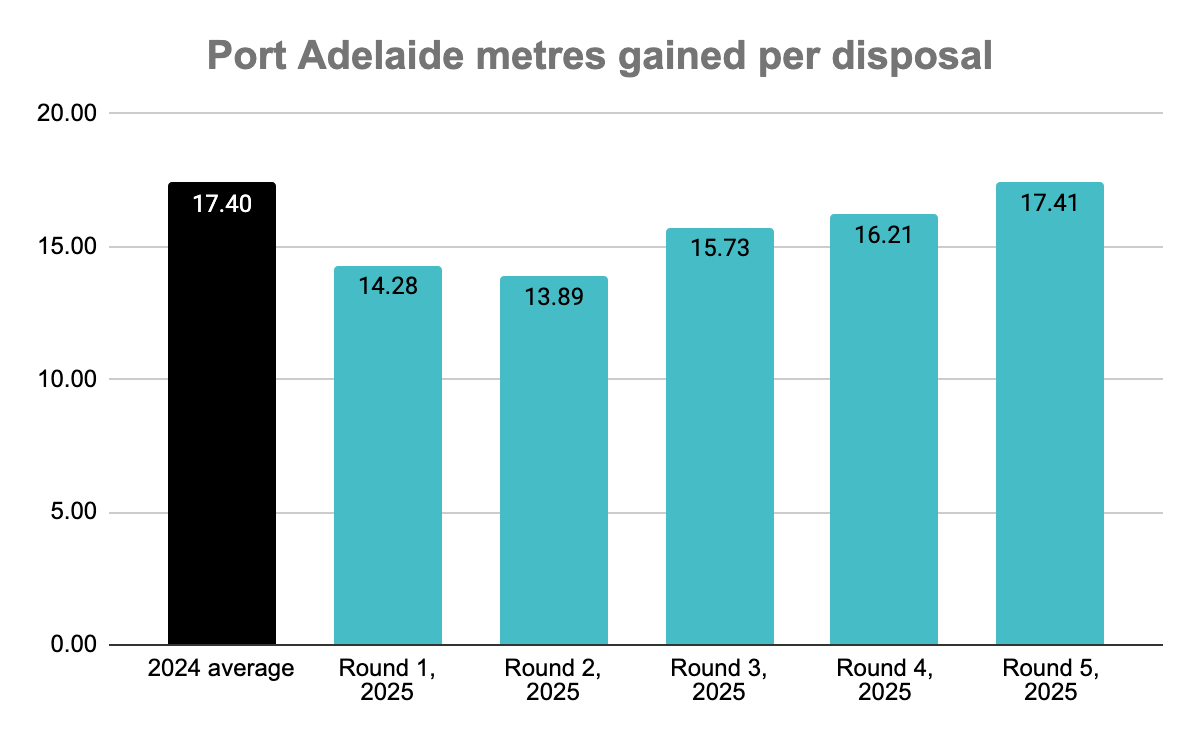
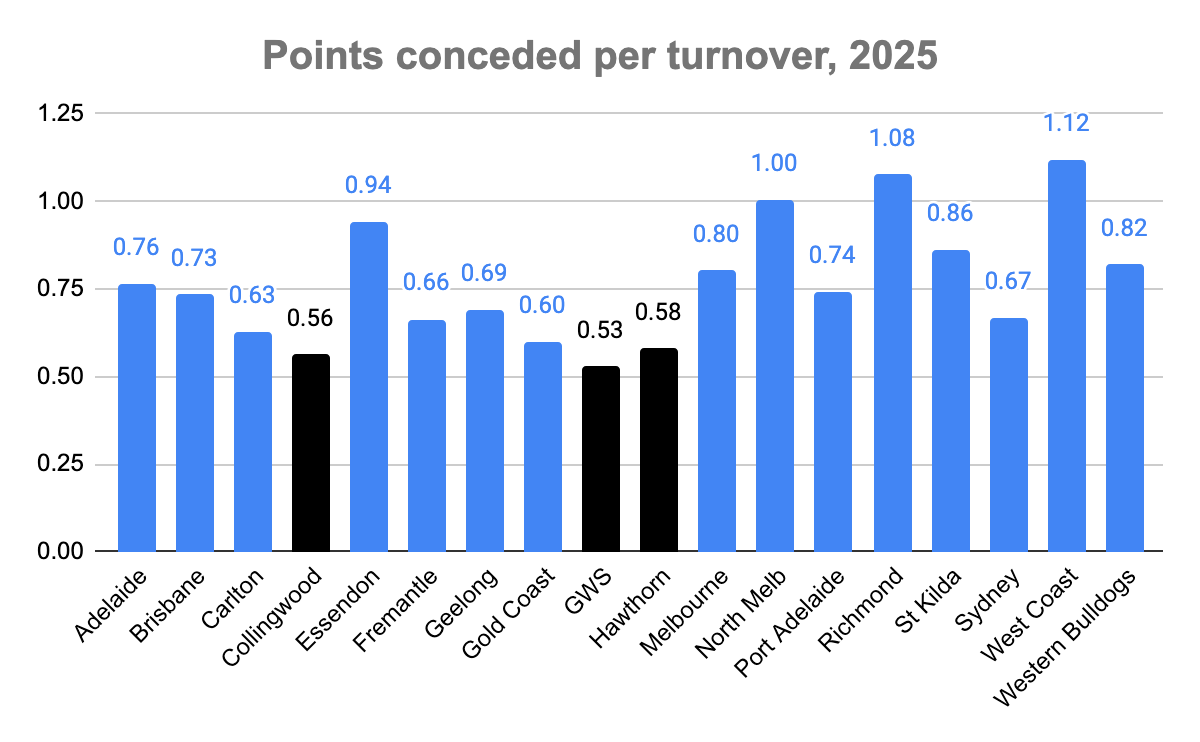
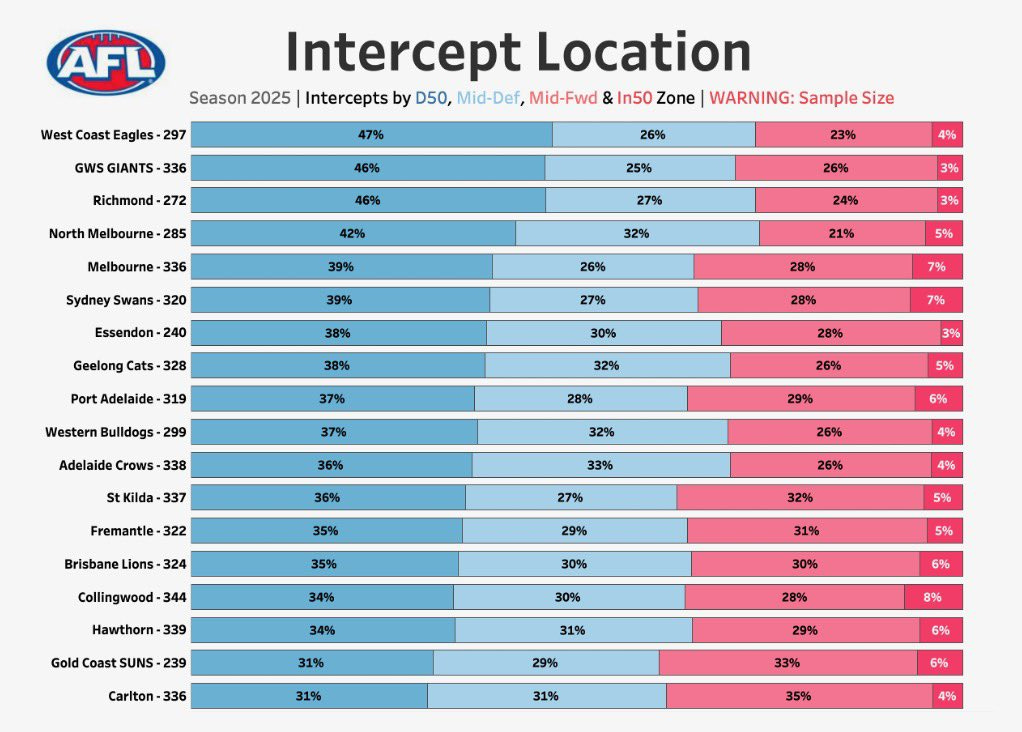
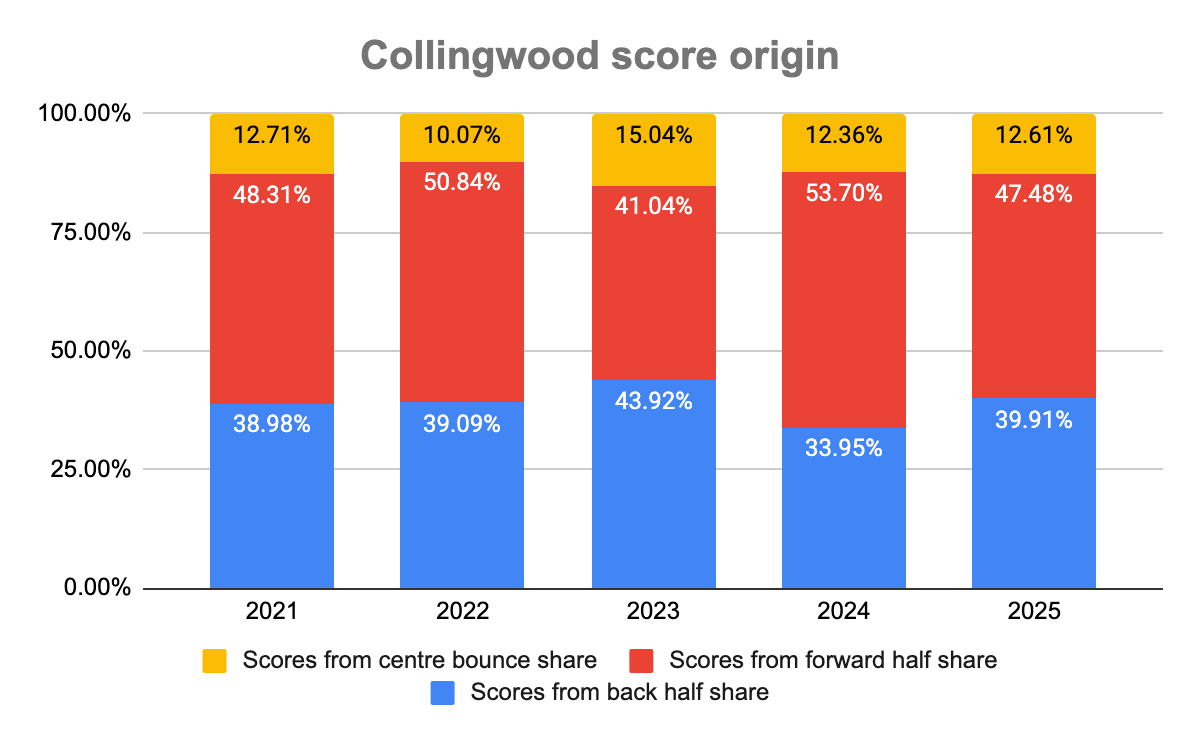
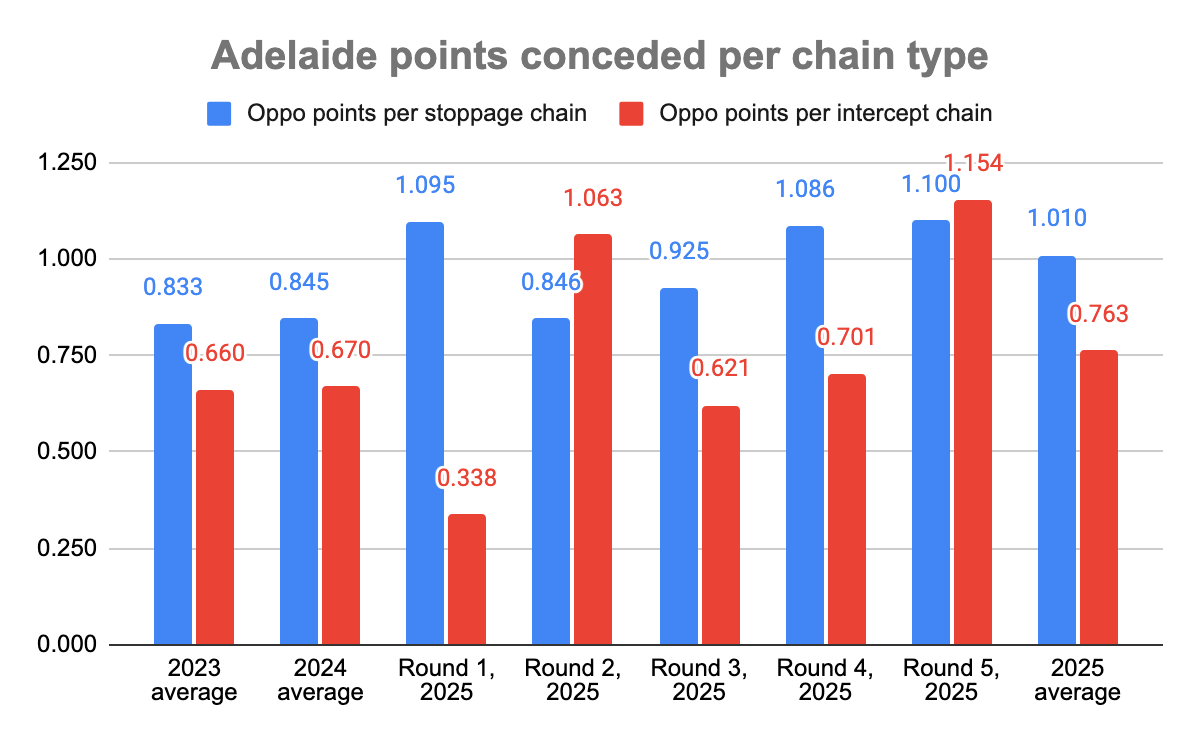
This is really great in depth writing on the game Mateo. Much better than what we get from the MSM these days. Love your use of statistics to explain your points. I am an old fart so confined to watching on TV, where you see much less of the game unfold than watching live. So really appreciate the in depth analysis of what I'm not always seeing watching TV.